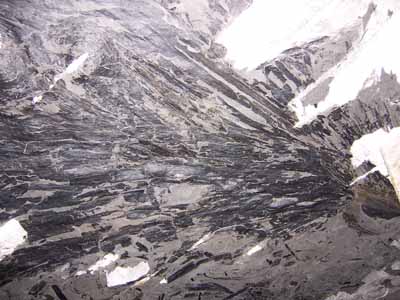 |
 |
 |
 |
 |
Produced
by the Population Genetics and Evolution class, Furman University |
||||
 |
 |
 |
 |
 |
Produced
by the Population Genetics and Evolution class, Furman University |
||||
 |
The
Carboniferous: Cordaites |
 |
||
| Cordaites
were a seed-bearing gymnosperm, a group of ferns that often had leathery,
strap-shaped leaves (Steur 2008). Cordaites were dioecious, meaning
they had separate male and female reproductive structures, located at
the end of the cone-like stalks that shoot off from the leaf axis (Dimech
2009). They are believed to be closely related to conifers due to these
cone-like reproductive structures (Elrick 2009). This group of tree-like
plants grew up to 30 meters tall and had diameters of up to 1 meter (Dimech
2009). The long leaves grew up to 1 meter in length and 15 centimeters
wide, generally characterized by having multiple parallel veins with no
distinct central midrib (Dimech 2009). The structure of their roots has
lead to comparisons between Cordaites and modern mangrove trees,
which have prop roots that provide structural support in salt-water environments
(Steur 2008). Though some fossils indicate that Cordaites had
structures resembling prop roots, there is still doubt as to whether or
not these plants lived in similar conditions (Elrick 2009). Fossils of
Cordaites have also been found in locations that suggest it may
have lived in drier, land habitats, possibly as the dominant, large plant
species (Elrick 2009). Page by LinLin Zhao |
 |
| Leaves of Cordaites, a type of seed-bearing gymnosperm. Photo Credit: Illinois State Geological Survey | |
|
Dimech, A. 2009. The seed ferns &
Cordaites. Accessed March 3, 2010. Elrick, S. 2009. Pennsylvanian mire forest. Illinois State Geological Survey. Accessed March 3, 2010. Steur, H. 2008. The gymnosporous tree Cordaites. Hans' Paleobotany Pages. Accessed March 3, 2010. |